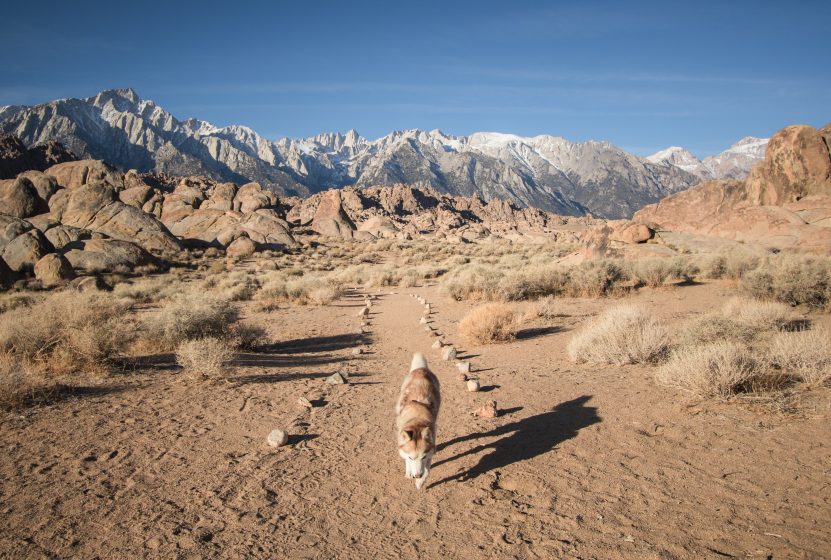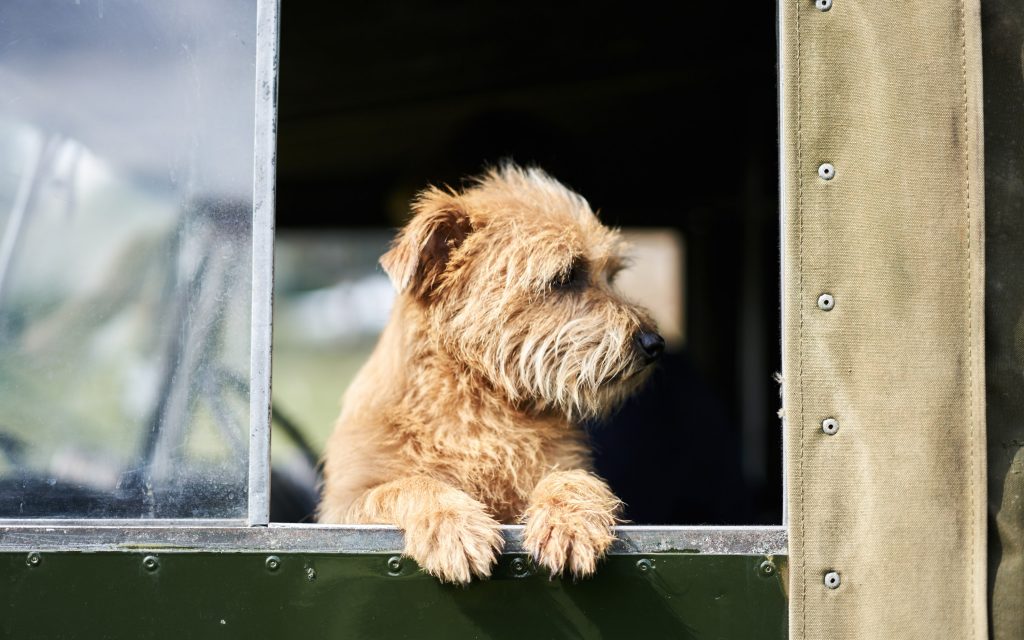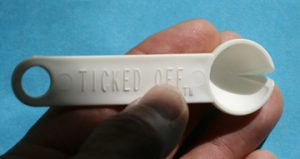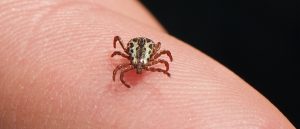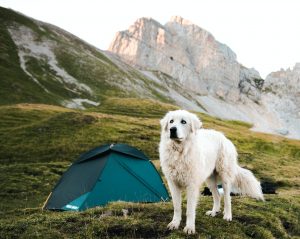As the days get more amenable to outdoor activities, both you and your canine partner want to get out and enjoy them.
If you’re getting hot and tired and thirsty outside, it’s a sure bet your canine pal is feeling the same way
Here are some thoughts from a veterinarian on making sure your outdoor adventures don’t end up in the vet’s office for something easily preventable.
- First off, make sure your pal is vaccinated. Rabies is real and really deadly, and it’s not just in the 3rd world. Ideally, your dog should get his first rabies shot at around 3-4 months of age, another one a year later, then very likely every 3 years after that.
- Secondly, vaccinate for canine distemper and parvovirus (likely combined in a single dose given 3 times as puppies, then yearly to every 3 years). Parvo is a freaking deadly disease that causes dogs to basically poop themselves to dehydration and death, and the vaccine is dirt cheap.
- Third, if you’re in an area with ticks (and we all are, basically), vaccinate your dog for Lyme Disease. I tell folks that “no vaccine is 100% effective, but this definitely stacks the odds in your favor.”
- If your dog is going to be around other dogs, or your dog is a brachycephalic (short-nosed; think English Bulldog, Boxer, or Boston Terrier), get the kennel cough vaccine as well. We all know those dogs have breathing problems, and a mild case of kennel cough could rapidly turn into pneumonia with these guys.
Now that your buddy is vaccinated, let’s talk about general Dog Maintenance:
- When you get outside, plan to bring fresh water for your pal. Letting a dog drink out of a stream sounds like a great way to let him rehydrate, but they can get a fun disease called giardiasis (“beaver fever”). This is a protozoan that causes diarrhea, and humans get this from outside water sources, too. Plan on bringing enough fresh water for you and your pal, along with a collapsible water bowl for convenience. Alternatively, you can bring a portable hiking water filter and you both can drink from it’s clear and clean discharge. This is the first time I have ever combined “clear,” “clean,” and “discharge” into one run-along sentence.
- Keep an eye on your dog’s feet, specifically its pads. The sensitive pads on the bottoms of a dog’s foot are calluses. On hot days, they can burn easily on concrete and heated beach sand. Rule of thumb: if it’s too hot to walk on a surface in bare feet, it’s too hot for a dog’s feet.
- If you’re in the Arctic Circle, consider a product called “Pad Dressing” to protect the pads from ice and salt. It’s sold at canine boutiques and is basically a thick wax ointment that protects the pad surface.
Wild animals!
If your buddy comes back with a squirrel or chipmunk, don’t let him eat it… that could cause some serious vomiting, diarrhea, or worse.
Check his face and paws for bites if he brings back a small animal for your approval. If you are in bear or bobcat country, don’t let your dog off-leash. You want to be able to keep him out of danger and help you run away to fight another day.
Let’s talk about medicine, both preventive and reactive:
- When you get a IFAK (Individual First Aid Kit) for yourself, add some items for your dog. I would suggest Quick-Stop (styptic powder) for a broken nail, and some rolled gauze bandage material for a quick band-aid.
Other uses for gauze include making a loop out of it and improvising a muzzle if your pal is injured and you have to perform a rescue or painful procedure. I have seen owners badly bitten by nice dogs when the dogs have been in severe pain the owners reach over to help them. Be prepared for this!
Tick Spoon!
What is a tick spoon, you ask? It’s awesome. It’s a tiny spoon with a notch in the cup portion. You find an embedded tick and wedge the notch around it and lever the little bastard right out of the skin. It’s like Insect Magic. Ask your vet, or buy one at Tick Spoons R’ Us. They’re invaluable.
- Neosporin can be used for very minor burns and cuts on your dog. Don’t use too much, because they have a habit of licking it off and, while it’s not toxic, it might act as a bit of a laxative if they really go to town on it
- Aspirin, you ask? I’m not a big fan of this in dogs. Why is this? The internet says it’s awesome, and people take it as well. First off, an 81mg aspirin in a person makes the blood clot a bit less in people with heart problems. That person might be 200 pounds. You give that size of an aspirin, or a regular-sized 325mg buffered aspirin to a dog, and you’ve made their blood great at NOT clotting. This might be a problem. Plus, I don’t think a lot of folks think that aspirin nowadays is completely awesome for pain (headaches or muscle pain). I’m a fan of canine-specific anti-inflammatories from your vet… ask about carprofen (Rimadyl), Deramaxx, Metacam liquid, and others that your vet might prescribe for your dog. If you tell your vet about your situation at your next visit, they might give you a supply to keep in your DIFAK (Dog Individual First Aid Kit, keep up with me).
- Nail trimmers are good ideas… you’ll thank me the next time your dog runs after an evil squirrel and comes back with a broken nail and you’re three hours from help. Trim the nail short, so it’s not dragging or hanging as the dog walks, and you’ll be able to walk out and to assistance.
What do I recommend for fleas and ticks?
I like Advantage, Advantix, and other topicals. Soresto Collars are great, and so is the new Bravecto chew (8-12 week flea and tick prevention in a single chew). Frontline Plus is okay, but it’s not working for a full month in some areas… you may have to use it more often than you think for it to work.
A word about home remedies like garlic… DON’T DO IT. Garlic can cause anemia and liver problems in dogs. It’s not worth the hassle for a questionable treatment at best. Spring for the professional topicals and ensure your dog is protected in a professional way.
PRO TIP: Treat your dogs and cats for fleas at the beginning of the Spring, even if they are 100% indoors, or you have indoor cats and dogs that go out to pee and poop. If you treat every single animal in your house AT THE SAME TIME (meaning same day), and you keep treating the indoor/outdoor ones monthly, this will prevent the rare flea or tick hitching a ride into your house and setting up a breeding facility on your indoor pets. The indoor animals may only need to be treated every few months, but keep the outdoor guys on a monthly schedule.
My last thought is this:
If you’re getting hot and tired and thirsty outside, it’s a sure bet your canine pal is feeling the same way. Avoid strenuous exercise in the hottest part of the day, provide plenty of fresh cold water, and be proactive about cooling and rehydration.
Watch for ticks!
Being a prepared and responsible pet owner and doing just a small amount of planning in advance means both you and your dog will have a far better time enjoying the great outdoors!



